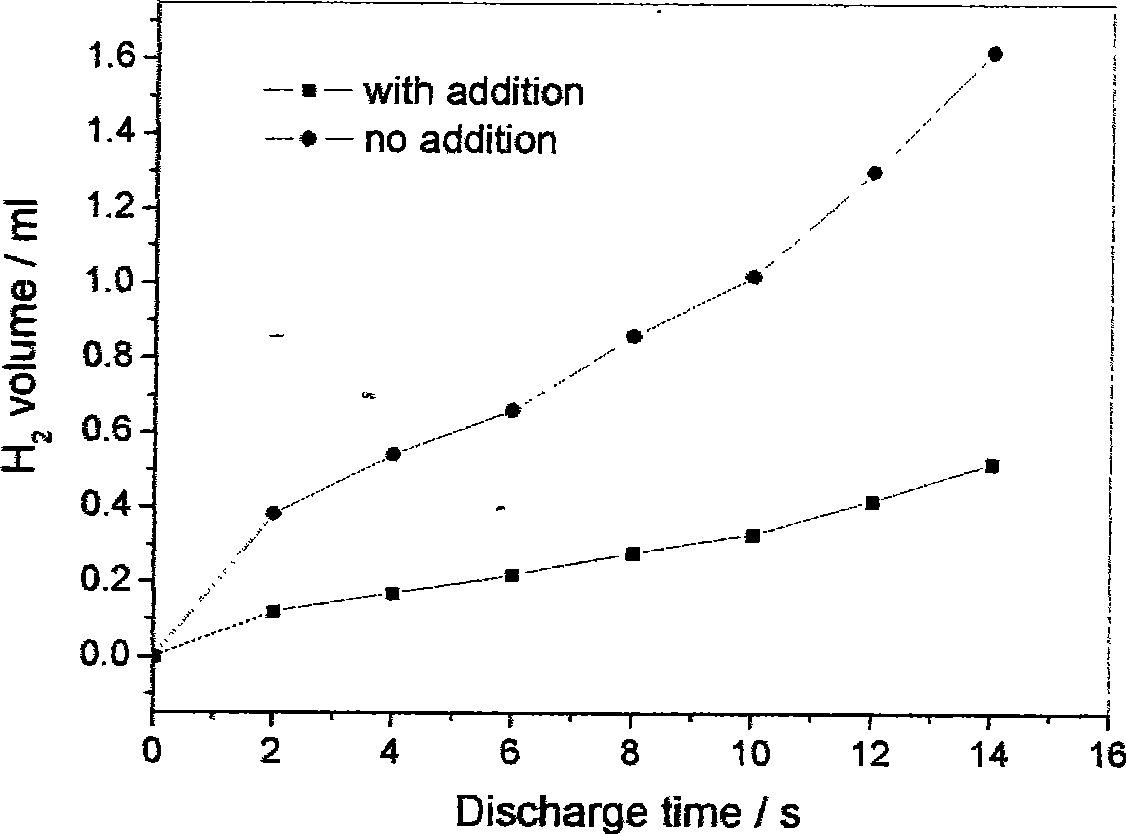Water system lithium cell electrolyte solution
An electrolyte and lithium battery technology, which is applied in aqueous electrolyte batteries, secondary batteries, circuits, etc., can solve the problems of toxic components, low discharge efficiency of metal lithium, and poor high-power performance of batteries, so as to inhibit corrosion reactions and improve Electrode utilization efficiency and effect of improving discharge efficiency
- Summary
- Abstract
- Description
- Claims
- Application Information
AI Technical Summary
Problems solved by technology
Method used
Image
Examples
Embodiment Construction
[0017] In order to further understand the invention content, characteristics and effects of the present invention, the following embodiments are enumerated hereby, and detailed descriptions are as follows in conjunction with the accompanying drawings:
[0018] Please refer to figure 1 : KOH is used as a strong base for the aqueous electrolyte, and an alkali solution of 8 moles per liter is prepared, and then 10 g / liter of vinyltriethoxysilane is added to the alkali solution as an additive, and it is properly heated to fully dissolve it, and the preparation Produce the required electrolyte of the present invention.
[0019] The additive and the alkali are dissolved in water to prepare the electrolyte solution for the aqueous lithium battery. The alkali can be dissolved first and then the additive is added, or the additive can be dissolved in water and then dissolved in the lye.
[0020] From figure 1 It can be seen that the maximum discharge current density of the lithium ele...
PUM
| Property | Measurement | Unit |
|---|---|---|
| discharge efficiency | aaaaa | aaaaa |
| discharge efficiency | aaaaa | aaaaa |
Abstract
Description
Claims
Application Information
 Login to View More
Login to View More - R&D
- Intellectual Property
- Life Sciences
- Materials
- Tech Scout
- Unparalleled Data Quality
- Higher Quality Content
- 60% Fewer Hallucinations
Browse by: Latest US Patents, China's latest patents, Technical Efficacy Thesaurus, Application Domain, Technology Topic, Popular Technical Reports.
© 2025 PatSnap. All rights reserved.Legal|Privacy policy|Modern Slavery Act Transparency Statement|Sitemap|About US| Contact US: help@patsnap.com

